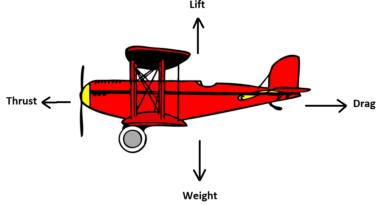Is the Pilot Profession More Suitable for Women or Men? Exploring Physical and Mental Characteristics
The aviation industry is one of the most dynamic and challenging fields, attracting people from diverse backgrounds and interests. Yet, a question often arises: Is the pilot profession more suitable for women or men, considering the physical and mental characteristics required? Traditionally, the cockpit was seen as a male-dominated space, but changing perspectives and breaking gender stereotypes reveal that piloting is not only accessible to women but also showcases their unique strengths. Let’s explore this complex topic by evaluating the physical and mental characteristics necessary to excel as a pilot, and how they apply to both genders.

Physical Requirements of a Pilot
One common misconception about piloting is that it demands immense physical strength, which might lead some to think it’s more suitable for men. However, modern aircraft are designed with technology that requires less physical strength and more mental acuity, making the physical differences between men and women less significant in terms of piloting capabilities.
Stamina and Endurance
Pilots must endure long hours in the cockpit, often crossing multiple time zones, which can lead to fatigue. While physical endurance is essential, studies show that women often have better endurance under stressful situations, which is beneficial in long-haul flights. This trait can make women just as capable as men in enduring physically taxing flight conditions.
Height and Reach Requirements
While there are certain height requirements for pilots, both men and women can meet these standards, and adjustable seats and controls are now standard in most commercial aircraft. Therefore, physical requirements have evolved to accommodate pilots regardless of gender, making the profession equally accessible to men and women.
Mental Characteristics Essential for Pilots
Mental resilience, decision-making, and stress management are critical in aviation, as pilots are often faced with high-pressure situations requiring quick and sound judgment. Here’s how men and women perform in these areas:
Decision-Making Under Pressure
The ability to make quick, effective decisions is essential for pilots. Studies indicate that while both men and women are adept at making decisions, they may approach them differently. Men may rely on quick assessment and action, while women tend to evaluate situations thoroughly before making a decision. These complementary decision-making styles can be beneficial in the cockpit, especially in complex scenarios where a balanced approach is necessary.
Stress Management and Emotional Intelligence
Emotional intelligence is another key trait for pilots, as managing one’s own emotions and reading those of others can improve communication and teamwork. Research suggests that women often score higher in emotional intelligence, which can be beneficial in cockpit interactions and handling in-flight challenges. Additionally, women’s tendency to be more collaborative can foster a supportive environment in the cockpit, which can be beneficial in multi-crew operations.
Men, on the other hand, tend to be goal-oriented and can compartmentalize stress effectively, which is valuable in handling technical aspects of flight. This balance can make both men and women well-suited to the cockpit environment, as each gender brings unique strengths to stress management and teamwork.
Leadership and Teamwork in the Cockpit
Pilots are leaders in the air, guiding their crew and ensuring passenger safety. In this role, communication and collaboration are crucial. While men often exhibit assertive leadership qualities, women are known to take a more inclusive approach. This difference in leadership style doesn’t favor one gender over the other but rather highlights how diverse approaches to leadership can enhance cockpit dynamics. A mix of assertiveness and inclusivity fosters a well-rounded leadership style, benefiting the overall flight experience.
Safety and Risk Assessment
Safety is paramount in aviation, and risk assessment is a major responsibility of pilots. Interestingly, studies have shown that women generally exhibit more risk-averse behavior, which can contribute positively to safety in aviation. Men, however, are often more willing to take calculated risks, which can be advantageous in situations requiring decisive action. This blend of risk-taking and caution demonstrates that both men and women possess valuable qualities for safe and effective piloting.
Industry Insights: Breaking the Gender Stereotype
In recent years, the aviation industry has actively encouraged gender diversity. Airlines and aviation organizations have launched initiatives to recruit more women pilots, recognizing that gender does not determine a pilot’s ability to excel. As of 2024, the number of women pilots is increasing, yet women still represent a minority. This imbalance is not due to a lack of aptitude but rather to outdated stereotypes and historical gender biases.
Conclusion: Gender Does Not Define a Great Pilot
Ultimately, the pilot profession does not favor men or women based on physical or mental characteristics. Both genders have the essential qualities that make for skilled, resilient, and effective pilots. The aviation industry is evolving, acknowledging that diverse perspectives, decision-making styles, and emotional intelligence contribute to a safer, more inclusive flying experience.
The pilot profession is suitable for anyone with the passion, commitment, and skills necessary to handle the challenges of aviation. As we move toward a more inclusive industry, it becomes clear that men and women alike can excel in this high-flying career, bringing unique strengths that enrich the profession. Whether you’re a man or a woman, the skies are open to those willing to soar!


